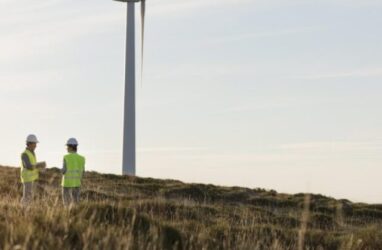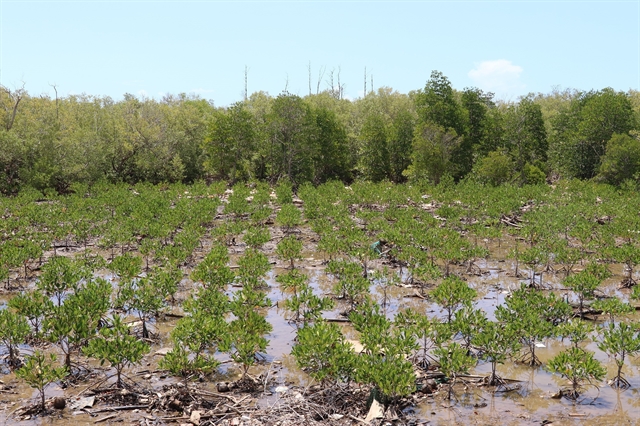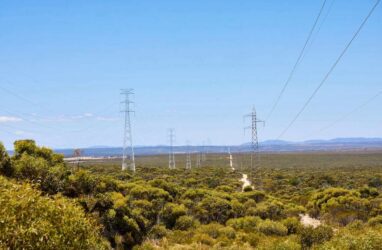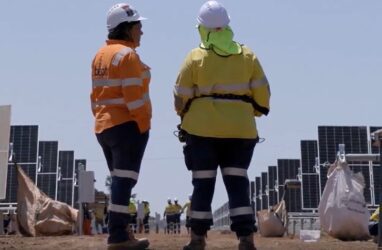Establishing different warning levels for natural disaster risks will help minimise damage and overcome the consequences of natural disasters.
Vous n'êtes pas connecté
- English
- Français
- عربي
- Español
- Deutsch
- Português
- русский язык
- Català
- Italiano
- Nederlands, Vlaams
- Norsk
- فارسی
- বাংলা
- اردو
- Azərbaycan dili
- Bahasa Indonesia
- Հայերեն
- Ελληνικά
- Bosanski jezik
- українська мова
- Íslenska
- Türkmen, Түркмен
- Türkçe
- Shqip
- Eesti keel
- magyar
- Қазақ тілі
- Kalaallisut ; kalaallit oqaasii
- Lietuvių kalba
- Latviešu valoda
- македонски јазик
- Монгол
- Bahasa Melayu ; بهاس ملايو
- ဗမာစာ
- Slovenščina
- тоҷикӣ ; toğikī ; تاجیکی
- ไทย
- O'zbek ; Ўзбек ; أۇزبېك
- Tiếng Việt
- ភាសាខ្មែរ
- རྫོང་ཁ
- Soomaaliga ; af Soomaali
 Maroc - RENEWECONOMY.COM.AU - A la Une - 11/Sep 08:07
Maroc - RENEWECONOMY.COM.AU - A la Une - 11/Sep 08:07
Six ways to improve ecosystem outcomes of renewable energy
The rapid shift to renewables carries significant risks to already stressed ecosystems. Our research finds ways to minimise this risk, ranging from strategic planning to smart technology. The post Six ways to improve ecosystem outcomes of renewable energy appeared first on RenewEconomy.
Articles similaires
More accurate forecasts at all levels needed to reduce coastal disaster risk
Establishing different warning levels for natural disaster risks will help minimise damage and overcome the consequences of natural disasters.
Morocco: OCP Group and ENGIE sign a partnership to accelerate the energy transition of OCP Group’s Ecosystem
OCP Group and ENGIE have signed a strategic partnership aimed at accelerating OCP Group's energy transition and contributing actively to Morocco's...
Pakistan’s photovoltaic (PV) boom gains momentum amid rising electricity costs
Pakistan is undergoing a rapid energy shift resulting in photovoltaic energy adoption among different consumer classes. The Great Solar Rush in...
Energy Insiders Podcast: From zero to renewable hero in 20 years
Simon Emms from transmission company Electranet explains how the state has moved so quickly towards 100 per cent net renewables, and why so much...
ENERGY GENERATION: SA renewables surge — drop in diesel usage ‘should ease Eskom tariff pressure’, says Ramokgopa
Energy Minister Kgosientsho Ramokgopa has outlined plans to ‘de-risk energy generation’, citing lower renewable energy costs and reduced diesel...
Russian-Ukraine War And Middle East Crisis: Global Impacts Of Oil On Trade And Economic Growth – Analysis
The ongoing crises in Ukraine and the Middle East are reshaping global energy and trade landscapes. Russia and Ukraine occupy strategic positions in...
NSW Ombudsman to support communities hosting renewables
Image: Stephen Tremain/shutterstock.com The New South Wales Government has expanded the functions of the Energy & Water Ombudsman NSW to ensure it...
From zero to 100 pct renewables in just 20 years: South Australia’s remarkable energy transition
South Australia has gone from near zero renewables in 2007 to a planned 100 per cent renewables share just 20 years later. The head of the state's...
The best renewable projects should not be just about price, and being responsible should not be a pipe dream
How do buyers and sellers of renewable energy assess whether projects will deliver positive social and environmental outcomes? The post The best...
Les derniers communiqués
-
Aucun élément





